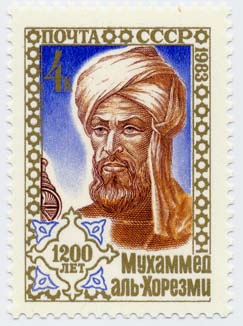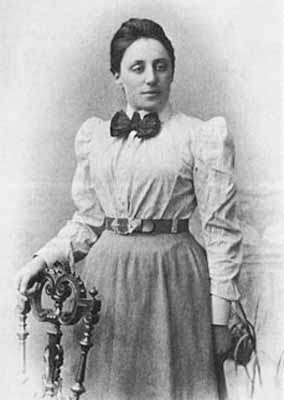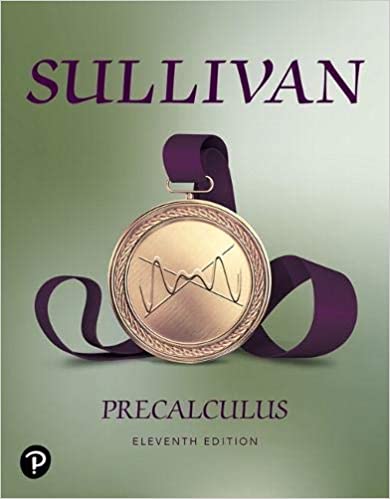 Muhammad ibn Al-Khwarizmi, 780-850 |
 René Descartes, 1596-1650 |
 Emmy Noether, 1882-1935 |
 Muhammad ibn Al-Khwarizmi, 780-850 |
 René Descartes, 1596-1650 |
 Emmy Noether, 1882-1935 |
COURSE NUMBER: MATH 1710-002 and MATH 1710-942
TIME: 12:45-2:05 TR; PLACE: Warf-Pickel 308 and Streaming; CALL# 83997 and 85693
INSTRUCTOR: Robert "Dr. Bob" Gardner; OFFICE: Room 308F of Gilbreath Hall
OFFICE HOURS: 3:35-4:00 TR; PHONE: 439-6979 (Math Office 439-4349)
E-MAIL: gardnerr@etsu.edu
WEBPAGE: www.etsu.edu/math/gardner/gardner.htm.
ASSISTANT: The graduate assistant for this class is Matthew Gladin. He will grade the tests and be available in Gilbreath 308T on Mondays 3:15-4:45 and Thursdays 4:00-5:00 for office hours (the phone number for Gilbreath 308T is 423-439-6982 and Mr. Gladin's e-mail is gladin@etsu.edu). He will also be available for one-on-one help in the Center for Academic Achievement (CFAA) on Mondays 5:00-9:00 p.m. and Tuesdays 4:00-9:00 p.m. Other qualified graduate students will also be available in the CFAA.
TEXT: Precalculus, 11th Edition, by Michael Sullivan (Pearson, 2020).

PREREQUISITE: Two years of high school algebra (the formal prerequisite). The realistic prerequisite is a working knowledge of the material in the appendix sections of the text book of A.1 (Algebra Essentials), A.2 (Geometry Essentials), A.3 (Polynomials), A.5 (Rational Expressions), A.6 (Solving Equations), A.9 (Interval Notation; Solving Inequalities), and A.10 (nth Roots; Rational Exponents).
DIAGNOSTIC TEST: You will have the opportunity to take a multiple-choice diagnostic test online until midnight Friday August 27. If you score 70% or higher, you will be given the choice to drop this class and move into a Precalculus 2 (Trigonometry) class (MATH 1720). No calculator is allowed when taking the test and it covers material from Precalculus 1 (Algebra).
DESIRE2LEARN: I will not rely very much on the Desire2Learn ("D2L") website. I will post recordings of the in-class lectures on D2L and I will post your grades on D2L. I have created a discussion forum for each section of the book and each test. You can discuss particular problems on D2L and I, along with my assistant, will monitor these discussions and contribute as needed. For everything else, I will simply post material directly on the internet (where it is not password protected).
CENTER FOR ACADEMIC ACHIEVEMENT: Located on the first floor of the Sherrod Library, the Center for Academic Achievement (CFAA) is the place to go for help with writing and speaking, library research, core math and science courses, and other subjects. The center offers tutoring on a walk-in and appointment basis and is open during library hours, including nights and weekends. For more information, call 439-7115 or go to the CFAA website. A Flyer for the CFAA this semester is also available.
MyLab Math: MyLab Math is software provided by the publisher of the textbook. It comes with eText (a digital copy of the text book), animations, videos, exercises selected by the text book author, and skill review quizzes. You must purchase an access code to use MyLab Math. We will not use this resource formally in the course, but feel free to use it for additional help as you see fit.
SULLIVAN'S PRECALCULUS YOUTUBE CHANNEL: There is a YouTube Channel for Sullivan's Precalculus, 10th edition. Click on the "Playlist" button to link to Chapter Test Prep Videos for each chapter. These gives you exposure to extra worked examples, but the presentations lack the level of written explanation you will be expected to give on the tests.
CLASS NOTES: We will use projected digital notes for the presentation of definitions, examples, and statements of some theorem. The document camera will be used for marginal notes and additional examples and explanation. Copies of the notes are online. It is strongly recommended that you get printed copies of the overheads before the material is covered in class. This will save you from writing down most notes in class and you can concentrate on listening and supplementing the notes and examples with comments which you find relevant. You should read the online notes to be covered in class before each class (we will not have class time to cover everything in the notes; they are very thorough). Try to understand the examples and the meanings of the definitions. You should also read each relevant section of the book, paying particular attention to examples. Notice that these notes are based on the 10th edition of the text book and we are using the 11th edition. The material we cover is exactly the same in these two editions. The sections are the same in Chapters 1, 2, 3, and 5. In Chapter 4, Section 4.1 of the 10th edition has been split into Sections 4.1 and 4.2 in the 11th edition (and so Sections 4.2, 4.3, 4.4, and 4.5 of the 10th edition and the online notes correspond, respectively, to sections 4.3, 4.4, 4.5, and 4.6 of the 11th edition). Similarly, there may be some small differences in page numbers and exercise numbers between the two editions.
A SPECIAL PANDEMIC PROBLEM: We have a unique opportunity this semester to use some very contemporary real-world data to illustrate uses of the material in this class. We will use the number of active positive COVID-19 cases on campus as reported by the ETSU COVID-19 Dashboard to consider graphs of lines, average rate of change, and other ideas that may arise! The document that contains these examples is: Precalculus 1 (Algebra), Pandemic Inspired Problems.
CLASS VIDEOS: Videos prepared by Dr. Bob are available (or soon will be) on each section we cover. Links to these videos can be found on the Online Precalculus 1 (Algebra) Videos webpage. These videos cover all material in the class notes. We may not have time during class to cover every idea and every example, so these videos give you access to lectures which cover everything. The videos also give us the option of spending class time on working examples instead of repeating the material of the videos in a classroom lecture.
WORKED EXAMPLES: We will not have time to cover all the exercises that students want to see during class. A webpage with links to handwritten solutions of problems covered in class and problems that we do not have time to cover in class is available on the Precalculus 1 (Algebra) Solutions to Various Exercises webpage.
ABOUT THE COURSE: Though the title of the course is "Precalculus 1 (Algebra)," we will cover material traditionally covered in a college algebra class. This material is normally covered in 9th grade (Algebra 1) and part of 11th grade (Algebra 2) high school courses. However, this should not lull you into a false sense of security! The material is tricky and requires the utmost attention to detail! DO NOT make up your own rules or write things which are incorrect. If you think you have found a shortcut that we have not discussed, then BEWARE! The instructor will work problems in the easiest way possible and if you have discovered some quick, clever shortcut it is probably wrong! DO show all work and all steps to each problem (and, of course, use equal signs when needed). In this way, you may get partial credit for an answer which is ultimately wrong (assuming that your reasoning is basically sound).
OUTLINE:
Our tentative outline is:
Chapter 1. Graphs: Distance formula, midpoint formula, graphing points, intercepts, symmetry with respect to an axis or the origin, slope of a line, graphing lines, vertical lines, Point-Slope Form of a line, Slope-Intercept Form of a line, General Form of a line, parallel lines, perpendicular lines, center and radius of a circle, standard form of a circle, graphing circles.
Chapter 2. Functions and Their Graphs: Function, difference quotient of a function, domain of a function, sum and difference and product and quotient of two functions, graphs of functions, even/odd function, increasing/decreasing functions, local and absolute maxima/minima of a function, average rate of change of a function, the "Library of Functions," piecewise-defined functions, transformations and reflections of graphs of functions, building and analyzing functions.
Chapter 3. Linear and Quadratic Functions: Graph linear functions, average rate of change of linear functions, increasing/decreasing linear functions, graph quadratic functions, the vertex and axis of symmetry of a quadratic function, maximum/minimum of a quadratic function, building quadratic models, inequalities involving quadratic functions.
Chapter 4. Polynomial and Rational Functions: Degree of a polynomial function, graphing polynomial function, domain of rational functions, vertical asymptotes of rational functions, horizontal and oblique asymptotes of rational functions, graphing rational functions, polynomial and rational inequalities, the Remainder and Factor Theorems, Descartes' Rule of Signs, rational zeros of a polynomial function, real zeros of a polynomial function, Intermediate Value Theorem.
Chapter 5. Exponential and Logarithmic Functions: Composite functions, one-to-one functions, inverse functions, graphing an inverse function, finding an inverse function, exponential functions, the number e, exponential equations, interchanging logarithmic and exponential statements, evaluating logarithmic expressions, domains and graphs of logarithmic functions, logarithmic and exponential equations, exponential growth and decay, population models, Newton's Law of Cooling, logistic models.
GRADING: We will have four tests (T1 - T4) and a comprehensive final (F). Your average will be computed as follows:
TESTS AND HOMEWORK: On the tests, you will be required to write in complete, gramatically correct sentences and explain your answer. The purpose of this approach is to train you to communicate technical information clearly (a skill that may take you far and streamline your math education experience!). There will be no use of calculators on the tests (this is a math class)! This is good news, since you will not be given messy numbers on the test. In class, we may deal with messy numbers (and occasionally calculators). A list is given below of day-by-day homework ("HW") assignments. These will not be taken up or graded. These assignments are to help you understand the ideas and how to work the problems so that you are ready for the in-class tests (on which your grade is based, as explained above). We will discuss the assigned homework problems (and, if there is a request, unassigned problems) during class as time permits. If you want to discuss particular problems in more detail, then please make an appointment with Dr. Bob or his assistant; you can also visit the Center for Academic Achievement for help. The HW problems are broken into two categories: (1) Understanding/Vocabulary and (2) Exercises. We will put priority on the "Exercises" since these are the types of questions on which you will be tested.
SAMPLE TESTS: Copies of tests previously given in this class (along with solutions) are available at Precalculus 1 (Algebra) Test Solutions.
TEST SOLUTIONS: Solutions to each test will be posted after the test is given:
SYLLABUS ATTACHMENT: You can find an on-line version of the university's syllabus attachment (which contains general information concerning advisement, honor codes, dropping, etc.; last accessed 8/10/2021).
COVID-19 SAFETY POLICIES: You can find material on ETSU's COVID-19 polcies on the Modified Stage 4 Frequently Asked Questions (FAQs) webpage (last accessed 7/26/2021; document last updated 6/21/2021)). This document includes the following questions/comments:
ONLINE AND STREAMING OPTIONS: This class has two sections: Section 002 which formally meets in Sam Wilson Room 308, and Section 942 that is a streamed version of the Sam Wilson lectures which can be viewed live through Zoom. The lectures will also be recorded and posted on D2L for viewing later (I will send you links or post them in a central location, like on D2L). In addition, prerecorded videos of lectures on all the sections are available on the Online Precalculus 1 (Algebra) Videos webpage (these are prerecorded videos and not simply recordings of the in-class lectures). So if you become sick or are exposed to someone with COVID and have to quarantine, then you have these sources available to you to help you keep up. If you are concerned about sitting in the crowded classroom and would prefer to view the streamed version of the lectures from somewhere else then you need to be in the streaming section. If I become infected or test positive (improbable but not impossible), then either my assistant will take over the lectures or we will move the class onto Zoom for the appropriate quarantine period. The main difference between the in-class and streaming sections is that you cannot watch the streamed version live unless you are registered for the streaming section (but you can watch a recording; go to the D2L site for the class and check "Content" for links to these videos). Streaming students can verbally request that certain examples be worked in class. If you want to see certain examples worked in class, regardless of the section you are in, then just e-mail before class and I will try to work it in (the requested examples that I do not have time to work in class will be written up and posted on D2L, as will all examples worked in class). I will not take attendance; you can view the recorded versions of the lectures if you like... but with all this flexibility, do not get behind! The dates of the tests are set and everyone (including those registered for the streaming section) must take the tests on campus at the assigned time.
IMPORTANT DATES: (see the official ETSU calendar for more details; accessed 8/7/2021):
OUR TENTATIVE SCHEDULE. Our day-by-day schedule is as follows. Changes to the original planned schedule are in red fonts. "EOO" stands for "every other odd." Documents for students using the 10th edition of the text book have been prepared by Mr. Gladin to show how the Edition 10 exercises differ from the Edition 11 exercises for: Sections 1.1 to 5.8.
1.1: The Distance and Midpoint Formulas 1.2: Graphs of Equations in Two Variables; Intercepts; Symmetry |
1.2: 1-11 odd |
1.2: 13-85 (EOO) |
|
2.1: Functions |
2.1: 1-15 odd |
2.1: 17-121 (EOO) |
|
2.2: The Graph of a Function |
2.2: 1-9 odd |
2.2: 11, 13-41 (EOO) |
|
Review |
|||
2.6: Mathematical Models: Building Functions |
2.6: - |
2.6: 1-25 (EOO, excluding the calculator exercises) |
|
Review |
|||
3.5: Inequalities Involving Quadratic Functions |
3.5: 1 |
3.5: 5-37 (EOO) |
|
4.1: Polynomial Functions |
4.1: 1-13 odd |
4.1: 17-85 (EOO) |
|
4.3: Properties of Rational Functions |
4.3: 1-13 odd |
4.3: 17-61 (EOO, excluding calculator exercises) |
|
4.5: Polynomial and Rational Inequalities |
4.5: 1-3 odd |
4.5: 5-73 (EOO) |
|
Review |
|||
5.1: Composite Functions |
5.1: 1-7 odd |
5.1: 9-73 (EOO) |
|
5.3: Exponential Functions |
5.3: 1-15 odd |
5.3: 37-133 (EOO excluding calculator exercises) |
|
5.5: Properties of Logarithms |
5.5: 1-11 odd |
5.5: 13-111 (EOO) |
|
Review |
|||
5.8: Exponential Growth and Decay Models; Newton's Law; Logistic Growth and Decay Models |
5.8: - |
5.8: 1-29 (EOO excluding calculator exercises) |
|
Review |
|||
Return to Dr. Bob's webpage
Last updated: November 1, 2021.